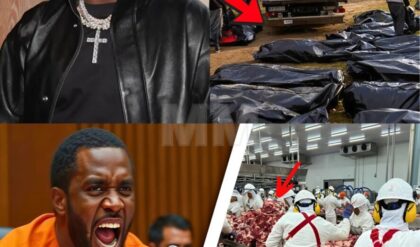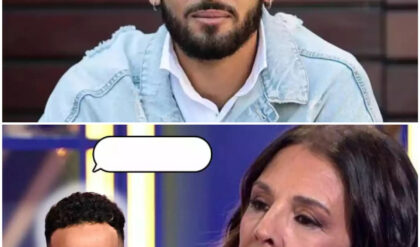Brandon Ingram: The Star Nobody Wants—Yet
In the realm of NBA trade rumors and roster moves, Brandon Ingram’s name has recently become a focal point. A prolific wing scorer and former All-Star, Ingram has been a key asset for the New Orleans Pelicans and was a significant piece in the trade that brought Anthony Davis to the Lakers and delivered them the 2020 championship. Now entering the prime of his career, one would expect a player of Ingram’s caliber to be in high demand. However, it appears that no NBA team is particularly eager to acquire him at this moment. Why? Let’s dive into the complex reasons behind Ingram’s seemingly stagnant market.
The Financial Obstacle
First and foremost, the question of salary looms large. Ingram is on the final year of his contract with New Orleans, earning slightly over $30 million. While that figure may already seem substantial, he is reportedly seeking a contract worth upwards of $50 million annually, the maximum possible for a player of his standing. The Pelicans and other teams around the league have taken note, and there is an apparent hesitation to commit to that kind of financial outlay.
As an unrestricted free agent in a year’s time, Ingram holds a significant amount of leverage. If a team were to trade for him now, they would need to factor in the likelihood of offering him a max contract extension—one they might not be ready to agree upon. Teams are understandably reluctant to give up assets for a player who could walk away in a year’s time if they cannot meet his salary demands.
A Difficult Fit on the Court
Beyond his contract situation, Ingram presents some on-court challenges. Although he is an excellent offensive player, his style of play necessitates being a primary ball-handler, a role that may not suit every team. In some ways, Ingram is reminiscent of DeMar DeRozan—a highly talented scorer who can put up big numbers but who isn’t always easy to integrate into a winning formula. For a team to maximize Ingram’s value, he needs the ball in his hands, and that doesn’t always align with the modern NBA’s emphasis on three-point shooting and efficient, ball-moving offenses.
The Pelicans, for instance, already have Zion Williamson, a ball-dominant player, as well as CJ McCollum and Dejounte Murray, both of whom thrive with the ball. With such a roster, adding Ingram to the mix as a primary option could create congestion and limit overall team effectiveness. While he is a very good player, Ingram does not offer the versatility of someone like a role-playing sharpshooter or an elite defensive wing, making him a challenging fit for a team in search of a flexible and complementary piece.
The Pelicans’ Needs
The Pelicans, in particular, are at a crossroads. Their roster is brimming with offensive talent, but they have a glaring weakness at the center position. The Pelicans could use a player like Ingram in a trade to acquire a true center who could anchor their defense and complete their starting lineup. This gap in the Pelicans’ roster presents a clear opportunity: trade Ingram to get a quality big man. However, finding a willing partner in such a deal has proven difficult. Potential trade partners are either unwilling to match Ingram’s contract demands or do not have the right assets to offer in return.
Possible Trade Scenarios
When examining potential destinations for Ingram, two teams stand out: the Toronto Raptors and the Portland Trail Blazers.
Toronto is in a bit of a flux, balancing between a rebuild and a playoff push. They have assets that could theoretically entice the Pelicans—Pascal Siakam, Jakob Poeltl, or even OG Anunoby. If the Raptors are willing to part with one of these pieces, the Pelicans could finally solve their problem at the center position, while Toronto would gain a young scorer entering his prime.
The Trail Blazers, meanwhile, have a glut of centers. With Robert Williams, Deandre Ayton, and Donovan Clinger all competing for minutes, Portland could conceivably offer a trade package that includes one of their centers alongside a significant wing piece or draft assets in exchange for Ingram. For both teams, a deal could be mutually beneficial, but again, the question of Ingram’s contract demands clouds the situation.
A Question of Timing and Market Conditions
Adding to the complexity is the timing. The upcoming NBA draft classes are considered to be very strong, especially in the top five spots. Teams in rebuilding phases, particularly those in the Eastern Conference like Detroit, Washington, and Brooklyn, are focused on improving their lottery odds rather than adding a player like Ingram, who could improve their record enough to take them out of contention for a top draft pick. For teams like these, a player of Ingram’s caliber could be highly desirable a year from now, but in the current context, they would prefer to remain patient and prioritize draft positioning.
A Perfect Storm of Challenges
All these elements—contract demands, on-court fit, roster needs, and the looming draft—have combined to create a perfect storm that leaves Brandon Ingram without a clear path forward. Despite his talent and potential, Ingram currently finds himself in a market that lacks an immediate, willing suitor. While teams are intrigued by his skill set, the particulars of his situation make it difficult for them to justify a move at this time.
The Potential for a Miscalculation
If the Pelicans fail to either extend Ingram or trade him, they risk losing him for nothing when he hits free agency. In an ideal world, a team would step forward and acquire Ingram in a mutually beneficial deal, but as it stands, the Pelicans might be in danger of overestimating his market value. Entering the season without a solidified center and with Ingram’s status up in the air could prove costly. The Pelicans are one Ingram trade away from potentially solidifying themselves as a top team in the Western Conference, but time is ticking.
As we approach the NBA season, Brandon Ingram’s situation serves as a reminder that even in a league that values talent above all else, timing, fit, and financial considerations can still render an All-Star somewhat unwanted. Whether a resolution will come soon or we will be left with more questions than answers remains to be seen, but one thing is certain: all eyes will be on New Orleans to see how they navigate this tricky scenario.





